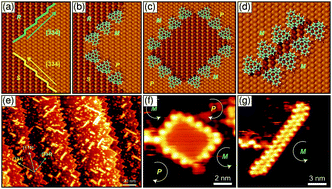Electronic effects and fundamental physics studied in molecular interfaces
Abstract
Scanning probe instruments in conjunction with a very low temperature environment have revolutionized the ability of building, functionalizing, and analysing two dimensional interfaces in the last twenty years. In addition, the availability of fast, reliable, and increasingly sophisticated methods to simulate the structure and dynamics of these interfaces allow us to capture even very small effects at the atomic and molecular level. In this review we shall focus largely on metal surfaces and organic molecular compounds and show that building systems from the bottom up and controlling the physical properties of such systems is no longer within the realm of the desirable, but has become day to day reality in our best laboratories.

- This article is part of the themed collection: Scanning probe frontiers in molecular 2D-architecture world


 Please wait while we load your content...
Please wait while we load your content...